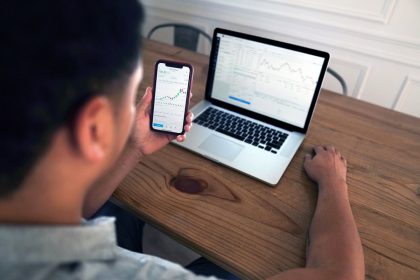Artificial intelligence has become the most ubiquitous tool in modern finance. From trading algorithms that parse millions of data points in seconds to risk models that anticipate liquidity gaps before they occur, its reach is undeniable. But amid the speed and scale of machine-driven decision-making, there is an uncomfortable truth: markets are still moved by human behavior, politics, and unpredictable shocks. Nowhere is this clearer than in emerging markets, where volatility resists neat equations.
As Claire Rich, Emerging Markets Macro Trader at Seldon Capital has observed firsthand how global trading desks increasingly rely on algorithmic precision. Yet, she argues that technology should never replace the instincts built over years of trading. Her position is grounded not only in practice but also in her role as an Editorial Board Member at a reputed journal, where she contributes to shape dialogue on how finance should integrate innovation without eroding expertise.
“AI is a remarkable accelerator,” Claire notes. “But it cannot capture the nuance that underpins risk in emerging markets. That requires human context.”
Algorithms Can See the Numbers, But Not the Nuance
Quant-driven strategies have reshaped developed markets, where liquidity is deep and data is plentiful. In these environments, algorithms thrive on clean signals: rate announcements, yield curves, volatility spreads. Yet, in emerging markets, the rules of engagement differ.
A machine may efficiently price interest rate divergence, but it cannot interpret the political subtext of a minister’s late-night speech or the social pressure building before an election. Liquidity in frontier bonds can vanish overnight, triggered not by spreadsheets but by a diplomatic standoff or a sudden fiscal shift.
Claire explains that this is precisely why EM trading demands more than speed. “A model can tell you how rates are moving, but it cannot explain why. Without the why, risk management is incomplete.”
In 2023, Claire worked with the EBRD on a first-of-its-kind callable bond denominated in Turkish lira during a period of severe market volatility. Regulatory restrictions had made local currency debt hard to access, forcing international investors to seek alternatives. Over six months, she and her team modeled risks for a product the company had never previously structured in such a high-rate environment, navigating approval processes and scenario testing. The issuance not only generated meaningful returns for clients but also demonstrated that in frontier markets, models can provide structure, but human judgment is what makes execution possible.
Supporting this, the Bank for International Settlements highlights how machine learning models are powerful for asset pricing and liquidity monitoring but introduce new risks around opacity and interpretation
The Silent Erosion of Human Skills in Trading
The promise of AI is efficiency: faster executions, broader coverage, and cleaner signals. Yet this very efficiency can discourage original thinking. Tasks that begin as simple aids—such as quick summaries or trade notes—can quietly shift into substitutes for judgment. Over time, this reliance can turn efficiency into dependency, where the tool shapes decisions instead of simply supporting them.
In trading, this erosion is especially dangerous. Instincts sharpened over years of observing markets—the ability to spot patterns others miss or to sense when liquidity is not as strong as it appears—fade when traders outsource too much to machines.
This perspective has shaped Claire’s contribution as a Judge for the 2025 Globee Business Awards, where she evaluates how companies balance innovation with sustainability. She brings the same scrutiny to financial markets: distinguishing between tools that empower and those that make professionals replaceable.
“The risk is not that AI will take jobs overnight,” Claire says. “The real risk is that we stop practicing the skills that make us indispensable. In finance, that is the ability to read context, not just numbers.”
The IMF’s 2024 Global Financial Stability Report reinforces this concern, noting that market participants view a “human in the loop” as essential when applying AI strategies
Redefining Risk Management in the AI Age
The challenge for trading houses is not whether to adopt AI—it is how to integrate it responsibly. In emerging markets, algorithms can detect anomalies across spreads and monitor dozens of cross-currency pairs simultaneously. Yet, the choice of whether to act on those signals depends on judgment forged in unpredictable environments.
AI can flag that liquidity in an EM bond is tightening, but only a human trader can weigh whether this reflects temporary capital outflows or a deeper crisis of confidence. Machines identify correlations; humans determine causality.
This balance has redefined what risk management looks like in 2025. The most effective firms use AI as an advisor, not an executor. They preserve room for dissenting human opinions, recognizing that resilience lies in diverse perspectives.
As Claire puts it: “AI is an excellent advisor, but the final call must remain human. Risk is not purely mathematical—it is contextual.”
Building a Future of Human-AI Coexistence
The rise of AI in macro trading is not a zero-sum game. The firms that will lead in the next decade are those that treat AI as a multiplier of human insight, not a substitute for it. That requires active investment in maintaining trader skills—whether through scenario analysis, policy interpretation, or cross-market storytelling.
This theme echoes through Claire’s recently authored HackerNoon article titled “The Dark Side of “AI Productivity”: How It Trains You to Be Replaceable“, where she warns professionals not to hand over their individuality to machines. Her message to financial markets is consistent: AI should be a tool you control, not a process you disappear into.
For emerging markets, this principle is especially urgent. The volatility of these economies is shaped by local politics, resource cycles, and geopolitical shocks that no algorithm can fully predict. Preserving human interpretation is not just about professional pride—it is about ensuring that risk is managed with depth, not just speed.
“The future of trading is not human versus AI,” Claire concludes. “It is humans who know how to keep their judgment sharp while harnessing AI responsibly.”







